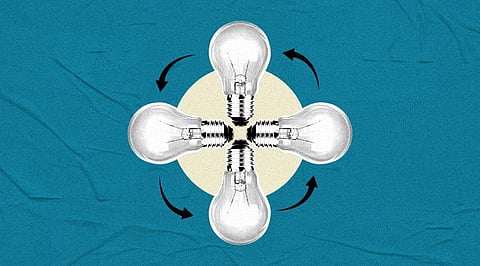

Around 20 percent of US patients suffering from mental health disorder couldn't afford its treatment due to expenses and regular accessibility. In such a scenario, AI can reduce barriers to access for mental and behavioral healthcare through a new approach to connecting patients with services. The potential of digital behavioral solutions and apps is significant enough to address the loopholes in mental healthcare in the US and across the world as well. The smartphone-based cognitive behavioral therapy promises to treat conditions like – depression, eating disorders, and substance abuse.
NLP powered voice-first tools are expected to make their entry into patient-provider services in an innovative way. Smart speakers are ready to relieve clinicians of their burdensome routine while capturing free-form conversations and translating the content into structured documentation. They can collect and retrieve information more quickly.
On the other hand, patients may benefit from the same technology at home owing to the flourishment of the consumer market of virtual assistants.
Although the crime of domestic violence is an underreported issue where symptoms are often hiding in plain sight for radiologists. AI can be used to flag injury patterns or mismatches between patients' medical history and the types of fractures present on x-rays. The technology will enable healthcare providers to provide even more value to the patient instead of simply examining their injuries.
The potentials of AI can close the gap in access to high-quality imaging studies to verify the type of stroke and identify the spot of clot or bleed. The researchers are currently working on AI-fueled tools that can automate the detection of stroke and support decision-making process around appropriate treatment.
Natural Language Processing (NLP) and Machine Learning (ML)-powered medical coding and billing are the perfect use case of the technology. NLP is appropriate to translate free-text notes into standardized codes which can save the time and effort from complying with convoluted regulations. Its ultimate goal is to reduce the complexity of coding and billing using automation. Healthcare organizations are most likely to continue adopting this strategy in order to control costs and speed up their billing cycles.
Patients, providers, and researchers across the healthcare industry will be able to avail the benefit from a more fluid health information exchange environment especially using artificial intelligence models. However, in such a dynamic exchange ecosystem, stakeholders will need to focus on maintaining the privacy and security of data.
The benefits of AI-centric health information system have the potential to outdo the risks depending on how everyone in the medical community advocates it.
AI has started benefitting image-based disciplines of healthcare early on. Ophthalmology has seen significant changes as AI algorithms turned more accurate, precise and robust. Deploying AI for clinical decision support can extend access to eye-health services while providing information on catching disease sooner.
Scientists and clinicians across the world are making swift progress in unleashing the cognitive functions of the brain which is the most mysterious organ. AI is aiding discoveries by assisting providers to interpret extremely complex data produced by the brain. Predicting seizures by reading EEG tests and identifying the beginning of dementia earlier can be done using AI technology. It helps healthcare providers to access more detailed and continuous measurement while helping patients improve quality of life.
Deep Learning tools can automate the process of measuring the number of malaria parasites in blood samples. One such tool achieved around 90 percent accuracy in identifying so, much alike pathology experts. The software can be run on smartphones with a camera on a microscope for wide access to expert-level diagnosis and monitoring.
NLP and other AI technologies have the potential to assist help providers to identify high-risk patients at an early stage. Analyzing individual's social media posts, electronic health record notes, and other free-text documents, the AI-powered tools can flag words or concepts resembling the idea of self-harm.
Researchers are also hopeful to develop apps based on AI algorithms to provide support and therapy in such cases especially teenagers who commit suicide at higher rates than other age groups.
Join our WhatsApp Channel to get the latest news, exclusives and videos on WhatsApp
_____________
Disclaimer: Analytics Insight does not provide financial advice or guidance. Also note that the cryptocurrencies mentioned/listed on the website could potentially be scams, i.e. designed to induce you to invest financial resources that may be lost forever and not be recoverable once investments are made. You are responsible for conducting your own research (DYOR) before making any investments. Read more here.
